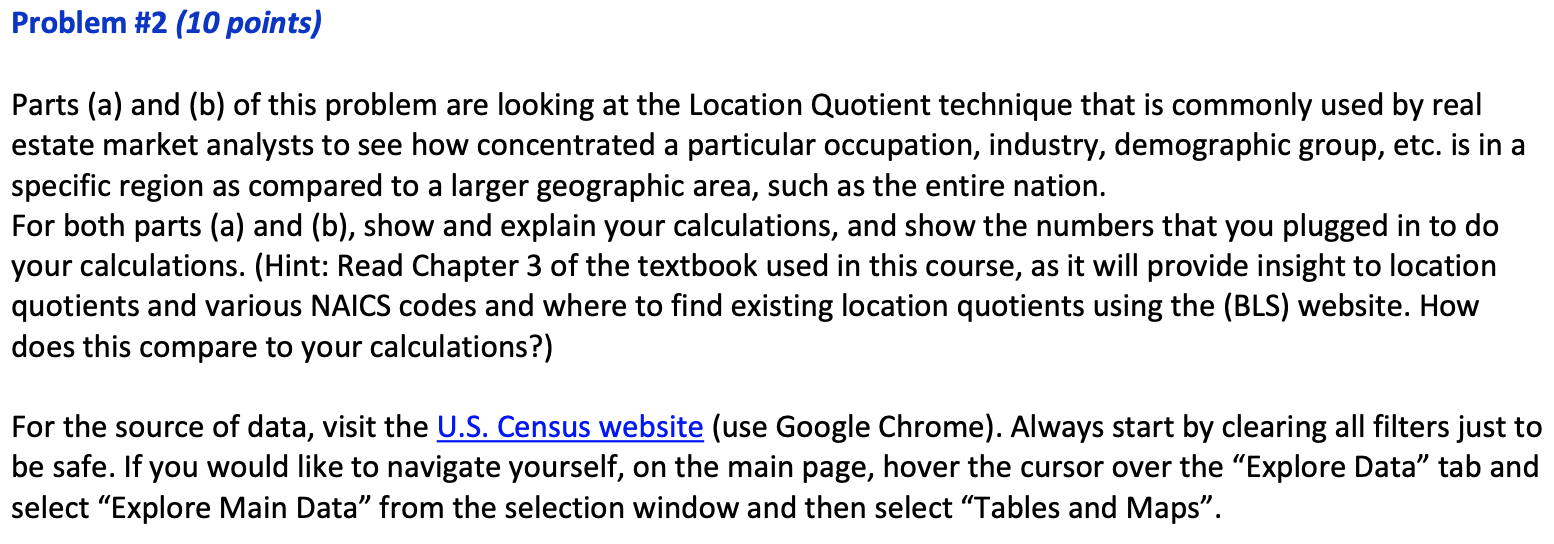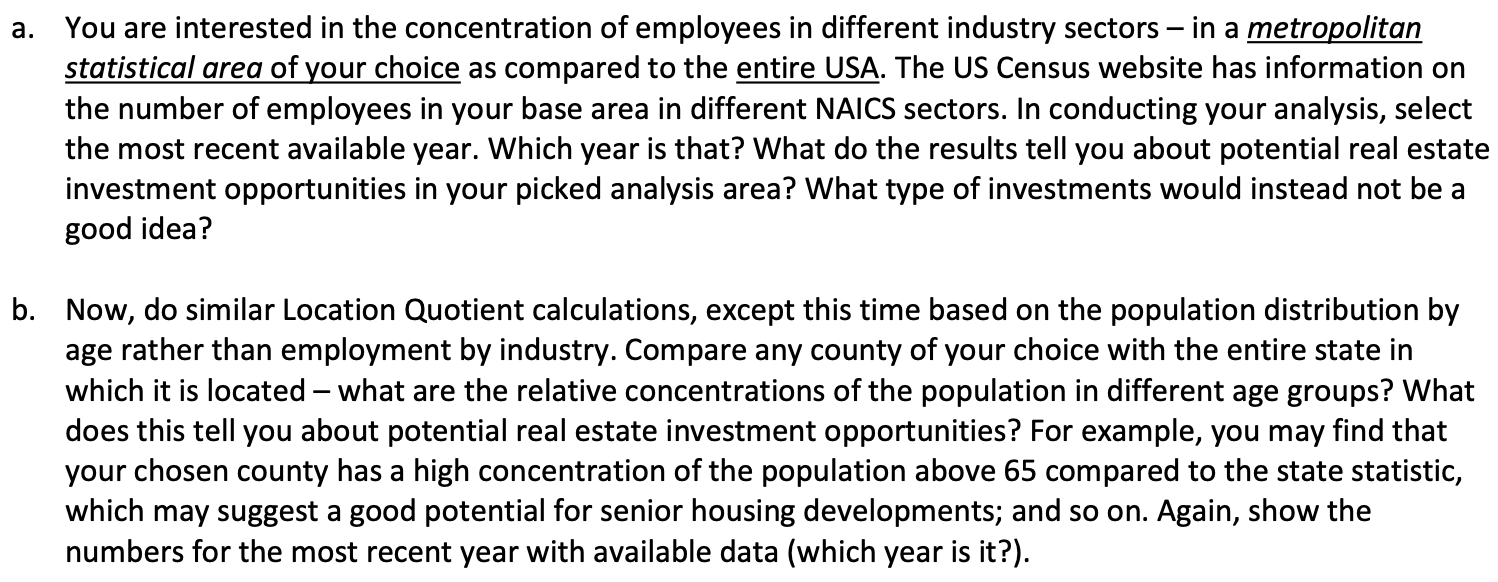

Problem #2 (10 points) Parts (a) and (b) of this problem are looking at the Location Quotient technique that is commonly used by real estate market analysts to see how concentrated a particular occupation, industry, demographic group, etc. is in a specific region as compared to a larger geographic area, such as the entire nation. For both parts (a) and (b), show and explain your calculations, and show the numbers that you plugged in to do your calculations. (Hint: Read Chapter 3 of the textbook used in this course, as it will provide insight to location quotients and various NAICS codes and where to find existing location quotients using the (BLS) website. How does this compare to your calculations?) For the source of data, visit the U.S. Census website (use Google Chrome). Always start by clearing all filters just to be safe. If you would like to navigate yourself, on the main page, hover the cursor over the Explore Data tab and select Explore Main Data from the selection window and then select Tables and Maps. a. You are interested in the concentration of employees in different industry sectors - in a metropolitan statistical area of your choice as compared to the entire USA. The US Census website has information on the number of employees in your base area in different NAICS sectors. In conducting your analysis, select the most recent available year. Which year is that? What do the results tell you about potential real estate investment opportunities in your picked analysis area? What type of investments would instead not be a good idea? b. Now, do similar Location Quotient calculations, except this time based on the population distribution by age rather than employment by industry. Compare any county of your choice with the entire state in which it is located - what are the relative concentrations of the population in different age groups? What does this tell you about potential real estate investment opportunities? For example, you may find that your chosen county has a high concentration of the population above 65 compared to the state statistic, which may suggest a good potential for senior housing developments; and so on. Again, show the numbers for the most recent year with available data (which year is it?). Problem #2 (10 points) Parts (a) and (b) of this problem are looking at the Location Quotient technique that is commonly used by real estate market analysts to see how concentrated a particular occupation, industry, demographic group, etc. is in a specific region as compared to a larger geographic area, such as the entire nation. For both parts (a) and (b), show and explain your calculations, and show the numbers that you plugged in to do your calculations. (Hint: Read Chapter 3 of the textbook used in this course, as it will provide insight to location quotients and various NAICS codes and where to find existing location quotients using the (BLS) website. How does this compare to your calculations?) For the source of data, visit the U.S. Census website (use Google Chrome). Always start by clearing all filters just to be safe. If you would like to navigate yourself, on the main page, hover the cursor over the Explore Data tab and select Explore Main Data from the selection window and then select Tables and Maps. a. You are interested in the concentration of employees in different industry sectors - in a metropolitan statistical area of your choice as compared to the entire USA. The US Census website has information on the number of employees in your base area in different NAICS sectors. In conducting your analysis, select the most recent available year. Which year is that? What do the results tell you about potential real estate investment opportunities in your picked analysis area? What type of investments would instead not be a good idea? b. Now, do similar Location Quotient calculations, except this time based on the population distribution by age rather than employment by industry. Compare any county of your choice with the entire state in which it is located - what are the relative concentrations of the population in different age groups? What does this tell you about potential real estate investment opportunities? For example, you may find that your chosen county has a high concentration of the population above 65 compared to the state statistic, which may suggest a good potential for senior housing developments; and so on. Again, show the numbers for the most recent year with available data (which year is it?)








